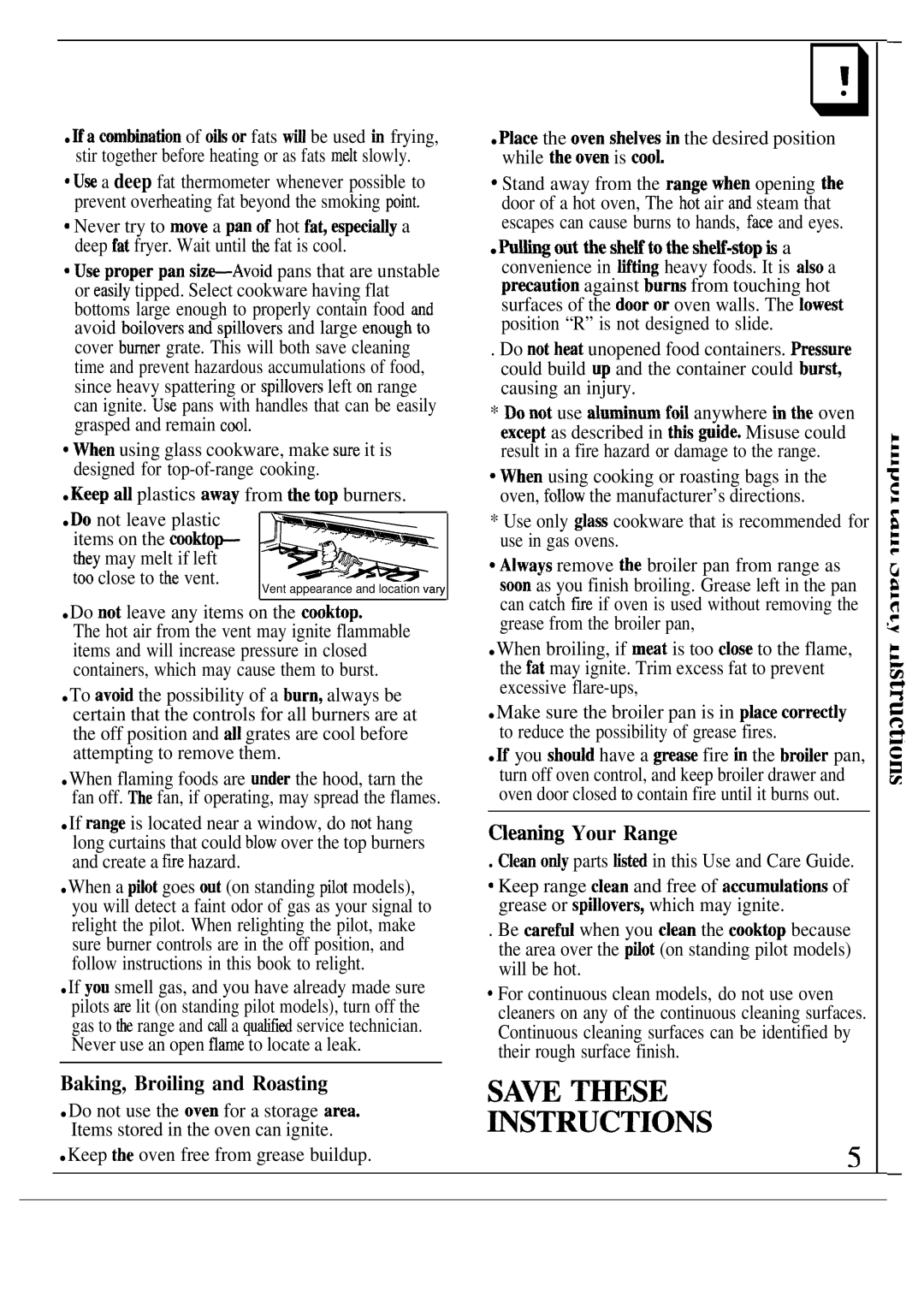JGBC18, JGBS18 specifications
The GE JGBS18 and JGBC18 are modern gas ranges that combine functionality with advanced technology, catering to both professional chefs and home cooks. These models are designed to optimize cooking performance while enhancing user experience.One of the standout features of the JGBS18 and JGBC18 is their powerful burners, including a high-output burner that delivers an impressive 15,000 BTUs. This allows for rapid heating and boiling, making it ideal for a variety of cooking techniques. The precision simmer burner is another highlight, providing low, even heat for delicate tasks such as melting chocolate or preparing sauces.
In terms of technology, GE integrates its TrueTemp system for consistent oven temperatures, ensuring that dishes cook evenly from all angles. The range features an easy-to-use electronic oven control that provides precise temperature settings and cooking modes, including bake, broil, and clean functions. The self-cleaning feature simplifies maintenance, using high temperatures to eliminate food residue, leaving the oven clean without the need for harsh chemicals.
The oven's interior is coated with a durable enamel finish that resists stains and provides easy cleanup. With a total oven capacity of 5.0 cubic feet, the JGBS18 and JGBC18 can accommodate multiple dishes, making it suitable for families or entertaining guests. The oven also includes a convenient interior oven light that lets users monitor cooking progress without opening the door, ensuring heat is retained.
Design-wise, both models boast sleek finishes that blend seamlessly into various kitchen decors. The heavy-duty cast iron grates provide a sturdy cooking surface and enhance the aesthetics of the range. The models come equipped with a standard broiler drawer, allowing for versatile cooking options, from broiling meats to toasting bread.
Safety features are paramount in the JGBS18 and JGBC18 designs, which include a gas safety shutoff system, preventing gas leaks and providing peace of mind. The ignition system is designed for reliable starting every time, ensuring that users can start cooking with confidence.
In summary, the GE JGBS18 and JGBC18 gas ranges offer a blend of powerful cooking capabilities, user-friendly technology, and thoughtful design details, making them ideal choices for those looking to elevate their culinary experience while maintaining ease of use and safety in the kitchen.

